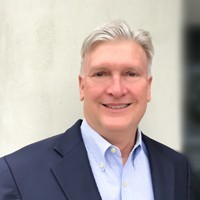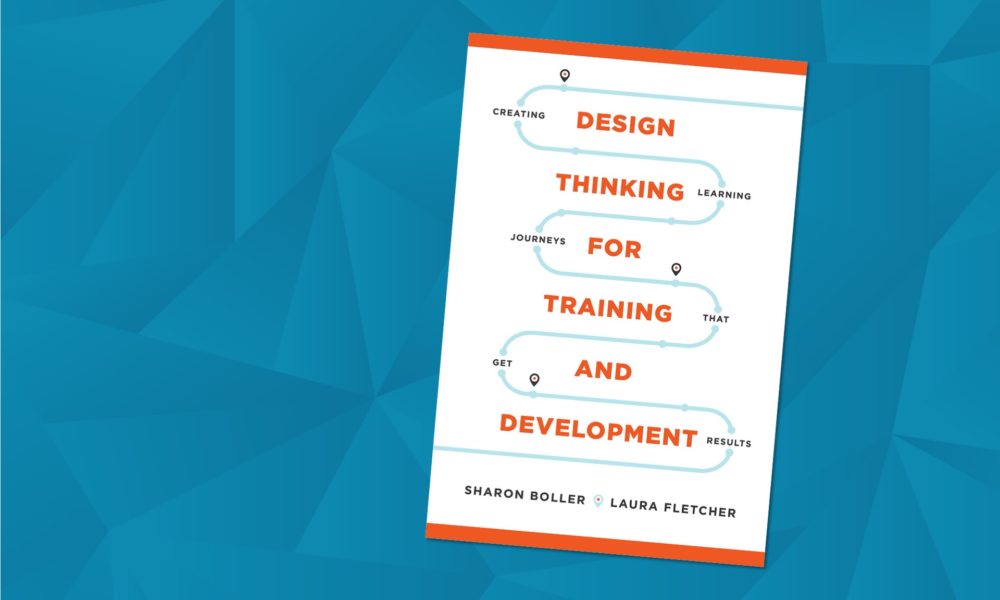Episode 167: Dan Reinbold on a Scientific Approach to Sales Training
2.4K Views | 24 Min Read
Shawnna Sumaoang: Hi, and welcome to the Sales Enablement PRO podcast, I’m Shawnna Sumaoang. Sales enablement is a constantly evolving space, and we’re here to help professionals stay up to date on the latest trends and best practices so that they can be more effective in their jobs.
Today, I’m excited to have Dan Reinbold join us. Dan, I would love for you to introduce yourself and your background to our audience.
Dan Reinbold: Sure. Thanks, Shawnna. I have been in sales my entire career ever since graduating from college, so if you met me on an airplane and asked me what I did for a living, I’d say sales and sales management. However, I had the opportunity years ago to go into sales training it was called at the time, which I did. I then through a series of promotions with the company called PAETEC at the time was able to go back into sales leadership. I ended up managing about 350 million in revenue and about 350 people. After we were purchased by a company called Windstream, I went back into sales enablement it’s now called and have been doing that for about the past 10 years. It’s been a career of sales, selling, sales management, and sales training.
SS: I love that. You’ve actually been referred to as a pioneer in sales training and I’d love your opinion. What are the core components of a successful training program?
DR: To be called a pioneer is quite generous, but I think the things that make a successful sales training program, and probably where some of the individuals that have mentioned that or gave me good recommendations really caught onto the fact that, to me, when you teach selling, and everybody knows there’s tons of sales training out there, hundreds and hundreds of books on selling lots of methodologies, but I really like to teach as a systematic, almost scientific approach. This is layered in with what I’ll call some psychology of why people might do what they do or say what they say. That’s all designed to be reactive to what the salesperson does.
I think what resonates with a lot of the people that I’ve taught over the years is the fact that we break down the sales training into steps. I call them the three pillars. Every step has a goal that would be the second pillar and then you layer in different tactics. This is all designed, so your three pillars would be the step of the sale, the goal of that particular step, and then any type of tactics that you might deploy, I’ll call it.
This is all designed to increase your probability of making a sale. Let me emphasize that when I teach selling, this is not about tricks and let’s not confuse tactics with gimmicks. This is really about sound selling practices that are all designed to really try to operate in the best interest of the prospect. If you don’t have that at heart, they’re going to smell that insincerity on you and this is why so many salespeople and sales training programs either aren’t successful or get labeled the old fashioned, not to denigrate them, but the used car sales approach.
This is not about high pressure. This is all about trying to increase your probability of making a sale, but not doing it at the expense of your prospect. Actually, Shawnna, done correctly, it should generate happy customers who then give you referrals and then the machine starts to pick up on that.
SS: I love that. I heard a panel that you were on recently, and while you may be a pioneer, I also think that you are very forward-leaning in a lot of that sales training space and its components because on the panel you actually discussed nurturing consistent continuous learning environments. I feel like that’s very cutting edge for the sales training space. I’d love for you to explain to our audience, what’s your perception on that and how can sales enablement help reinforce key skills and knowledge for reps through continuous learning?
DR: Well, that’s a great question. Boy, if I used the phrase nurturing consistent and continuous learning environments, then that sounds pretty highbrow for me, but I like it. To drive a consistent learning environment, and your question was really centered around the reinforcement of key skills. The way you reinforce key skills is, let’s go back to that procedural method of teaching where the most important thing, the biggest test of any type of learning program, whether it’s selling skills, product knowledge, system, and process is the application and the ability of the student to apply the knowledge.
This isn’t theoretical. If it doesn’t work in the field, if it doesn’t give you the result, then it might as well as just be left on a whiteboard in a classroom. Anything that you teach, and let’s go back to the comment I think about being a pioneer or even let’s say forward-leaning. it’s really about figuring out what your student is doing in the field and then coaching to that.
Now, I would be remiss if I didn’t use some sports analogy here. It’s like if you practice a certain thing on the practice field, but you can’t deploy it in a game-time situation or if it fails in a game-time situation, which sometimes that’s going to happen because your opponent is reacting, of course, at the same time. Then it probably wasn’t effective education.
To me, the true test of the ability of any learning program is, what kind of field results are you getting? Then that speaks to the whole topic of metrics and tracking and that, but when it comes down to sales program effectiveness, to me that comes down to, can you dissect or coach actual field sales calls? Whether you’re there in person as a coach, AKA a sales leader with your rep and the prospect, or if now with all the virtual meetings occurring, if you can break down a recorded call.
To me, all of the programs that are out there now that allow for recording and practicing and role-playing within an LMS or a learning environment are great, but where the rubber meets the road and the true test of effectiveness is in the field. If you can get real field data to break down real game film as I call it, that’s where you’re really going to see the effectiveness of your program.
SS: I think that’s fantastic advice and love that we get to drill into the reinforcement component of that. Now I’d love to go into the environment component though, from your perspective, what role does the learning environment play in the success of sales training programs and how can enablement practitioners help to nurture a really positive learning environment for their reps?
DR: The company that I was just most recently with is a great microcosm of your question. When I came in, they did the traditional, okay, we fly people in for the traditional week-long “new hire training” where lots of seasoned reps and even new people, cue the eye-roll, got to fly to corporate. We have to be there Monday morning, flying in on Sunday, be there Monday morning at 8:00 a.m. We do Monday through Thursday from 8:30 a.m. or whatever until evening time, come back on Friday, maybe have half or three-quarters of the day, and then people fly back home. Well, that becomes as companies grow, and you’re sitting in a three-hour different time zone than I am and we’re still in the United States, but if you’re international, that becomes even more challenging. To me, this is where if you were looking for a silver lining of COVID for training, let’s say, this is where it occurred.
It forced companies like mine at the time to examine that program, which when you really get down to it is terribly inefficient. What I mean by that, forget COVID, the pure nature of going into a classroom, sitting there all day after having flown in, and then maybe you go to dinner in the evening, you have homework, you get back in the classroom. It’s just overload. People reach their cognitive overload very quickly. Depending on the person, they can be overloaded by Monday at noon, some people will maybe last through Tuesday.
COVID forced us to really look at that and immediately transition everything to virtual, and we actually embraced it as a training department and found it to be more effective and more enjoyable for the audience. Now, don’t get me wrong. To me, I love the face-to-face in-person interaction that can occur, but when you look at the entire spectrum, meaning the full gamut of benefit and detriment when you look at that week to two-week long corporate new hire training, I come back to the word efficiency and say, look, it’s just not that efficient. If you now go virtual and you get set up with really good applications that allow good visual clarity of a virtual classroom, and you have anywhere from 15 to I’ll say 50 attendees and you can all be on camera, you can break them into groups, you can use a variety of different things. Let’s say you use slack, you can create different slack channels for your groups to communicate and do question and answer in, and then you can do role-plays, but you also still have to have that engagement, so you create games.
We broke our trainings into teams and we tried to make it fun. Since it’s virtual, we try to do some stuff that may be considered silly but engaging. One day wear your craziest hat or you introduce us to your pet that day or whatever it is, but you try to create a comradery on the virtual training. Since you’re going into their environment, they have more of the ability to do show and tell on stuff that is important to them. You’ve got this real trade-off between the two environments where, yeah physical interaction in the classroom is nice, but when you look at the prototypical corporate training program, virtual can actually bring you so many more benefits.
You can spread it out over time. You don’t have as lengthy of class time so you get better cognitive participation because people could focus for a couple of hours, then you take a break.
Let’s say they’re salespeople, they can go off and they can do prospecting or study on some of the other things that they have to do to do their job. They’re not tied up wall-to-wall for one to two weeks. You can spread it out, you get a lot more efficiency in a lot of ways, it’s a much better training program. We were finding that the students like it better, you don’t have to worry about flights and planes and hotels and where you’re sleeping and all that kind of stuff. There’s a lot of benefit to the new virtual learning environment when it’s set up properly.
SS: Absolutely. I think that’s a fantastic answer and it makes a ton of sense; I appreciate that. I want to shift gears a little bit in this podcast because in addition to your sales enablement experience, as you mentioned in your introduction, you also have extensive experience as a sales leader. I know a lot of sales enablement practitioners often need to partner very closely with their sales leaders to design and deliver a lot of these training programs. I’d love to understand from you, what are some best practices around helping sales leaders achieve their core goals through training programs?
DR: There are a couple of things. The wonderful thing about learning how to sell and sell well is that you’ll never be without the ability to generate income for yourself. I think there’s a lot of benefit. At least to me personally, having been a salesperson, lived under a quota, at times in my career even being on straight commission, and then advancing up through sales leadership and getting larger and larger staffs, and like I said to the point where it culminated in hundreds of salespeople working for me. The benefit there is that then when you transition that to the classroom, it gives you credibility.
A lot of corporate sales trainers unfortunately don’t have that field experience. Now, this is not a knock on them, it’s just the way of the world. I think many companies are missing out on a particular element of taking successful salespeople and finding the ones that really enjoy coaching and training others and affording them an opportunity to be in sales enablement or sales training. What usually happens, Shawnna, just to be real here, is that trainers don’t make as much money as sales leaders and salespeople. You have to be willing to pay a little bit more to get those people that love to do that. I think the value is they have that field experience, they’ve done it before, they walk the walk. When they step in front of the classroom, it gives them that all important credibility. I think that’s one component.
The second component that you asked about is then how does this allow you to partner with the sales leaders? Well, look, when sales leaders found out that I manage teams, that credibility was built in. Look, you have to manage teams successfully, you could be really bad at something so therefore it doesn’t translate, but if you had a good track record that gives you the credibility.
They start to listen and open their minds more. When you show them a program that’s duplicatable and it’s combined with coaching and they’re seeing a mediocre salesperson increase their metrics, move up from 70% of quota to 100% or 110%, it just builds momentum, and it allows the programs in and of itself to be more received. Therefore, they’re more used and when they’re used, there are better results in the field and that’s what it’s all about.
Let’s be real, most sales leaders are looking at one thing and so are their managers. Did you make your number? Month in and month out, year in and year out, quarter in and quarter out, are you consistently making them? I think that’s the ultimate metric is, how are you doing with respect to your quota?
SS: Yep. I couldn’t agree more. That definitely is the ultimate end goal. Now, what are some of best practices that you might have then when it comes to gaining buy-in for enablement programs though from executive stakeholders because obviously they’re critical to have as business partners in the organization as well?
DR: Great question. I’m going to give you an unusual answer. One of the things I’ve always tried to do is try to continue to learn, to continue to evolve my ideas, to continue to listen to other ideas. Within the past year, if you’d asked me that question a year ago, I’d have said, oh, you have to have absolute buy-in from the executive level right down to your entire program and every detail of it.
Then, I was exposed to a philosophy from a senior vice president of sales. He said, you know what I want, buy-in from the bottom up. He goes, yeah, I want to support your program, but for me I’m going to support your program if the reps are loving the program, if they’re getting results. Then their managers are going to buy-in and they’re going to start to be looking at going, hey what’s Susie doing that the others aren’t doing? Susie is like, oh, I followed this procedure and I do this, I use these tactics and these steps, and I learned this from the sales trainer and then I have him on calls and we do coaching afterwards and they break down my calls with me.
Suddenly their managers are going, okay, I want Joey and Tom and Claire doing all that too. It starts to create this groundswell from the bottom up that other people are starting to catch on. They want to duplicate that success. When that filters up, the executives again, they’re going to be fine as long as you’re making your number, doing it ethically, doing it professionally, that your customers are happy.
It was an interesting philosophy to me that this Senior Vice President was saying, look, for me it’s fine, but he goes, I’m really not on sales calls, so I want the buy-in from the bottom up. I listened to that, and it really started to realign my thinking. I’ve seen a lot of programs fail where the executives went out and bought a program and hired a high price consulting firm to come in.
They did this at the company I worked at prior to me coming in and it actually did fail. They went out and spent a ton of money on a program and it just did not catch on, the salespeople didn’t buy it. They flew trainers all around the world and trained on this and it just didn’t get the buy-in. Even though the executives said, oh, this looks like a great program and purchased it and invested in it, they couldn’t force it downstream.
I think that’s a very interesting concept is you can’t force stuff downstream. If you really want to build a program, make sure that your reps that are you going to use the program buy-in before the executives go spend all the money on it. If you can get the field working and using the program, which is the most important thing in purchasing or buying any type of program or any type of internal sales enablement program or sales training program, then you’re going to have success. You’re not always going to have success just because you have executive buy-in from the top if your people aren’t finding it usable, duplicatable, coachable in the field. And that’s a very, very important distinction.
SS: I love that piece of advice, Dan, it is very solid. I loved the notion of thinking about bottom-up buy-in, that’s fantastic. Now, I know we’re almost at time. I’ve learned a ton of things from you throughout this podcast. I want to close on something that you had also mentioned just a moment ago, the importance of helping to drive revenue growth.
Now, you specifically call this out, even on your profile on LinkedIn that you help do so through education and development of salespeople. I’d love in closing for our audience some advice on how sales enablement practitioners can tie their efforts into revenue impact.
DR: You take your sales force, you look at, everybody’s doing forecasting and everybody’s trying to create more and more metrics to be able to evaluate their salespeople, but the one thing that continues to I think be missing is the grassroots game film, I’ll call it again, it’s worth repeating, approach to seeing how individual sales reps sell. You get people on their appointments, listening in. You listen to actual, not role play, I’m talking actual prospect calls.
I think one of the things that I never let go of that made me successful as a sales leader is what I went into my markets, I wanted to do one thing. I wanted to run real sales appointments with my regional director and one of their reps with prospects. Not with happy satisfied current customers. Those are important when the retention is involved, especially in the fields I’ve been in, which is, you know, SaaS and telecom. That recurring revenue is what makes all the efforts worthwhile, but I want it to be on the new prospect calls because that’s where salesperson performance can make a difference.
I went on to customer retention calls with the account manager, but I wanted to be on a call belly to belly with the rep and their manager. When we were done, we would go get a cup of coffee and we would sit down and we would start with the rep and say, how’d you do? What could you do better? Then we’d go to the manager. How do you think they did? What could they do better?
Then they would go to me as the I’ll say head coach, and we would go through it, and we would break it down. That grassroots ability to look into the performance of an individual will bring up the whole performance of the team if that manager takes those tidbits and starts to use that with all their people, whether they have a staff of 3, 5, 10, whatever.
Now with technology, you can accelerate that because you can record your calls, you can get transcriptions of calls. That grassroots coaching is what will ultimately drive revenue growth because sometimes the difference between making your number that month or that quarter is the difference between one or two big deals. That difference is often totally reliant on what that salesperson said and did throughout that sale.
I think that the biggest thing to go back and tie sales enablement practices to revenue impact is to drive a systematic approach to selling that’s duplicatable, replicable with every rep, resonating with them, and coachable in the field. That in and of itself is going to be able to drive up that primary metric of revenue increase. It starts with all the steps, whether it’s prospecting and you’re increasing your appointment rate, whether it’s increasing your second ability to get that next appointment. All the appointments I’ve been on are never a one-call close. Some of the very technical applications we’ve sold sometimes take anywhere from 6 to 18 months to persuade a customer to come over and give your company a try, so I think those are significant.
SS: Again, Dan, thank you so much for the fantastic advice on this podcast. I appreciate your time.
DR: My pleasure.
SS: To our audience, thanks for listening. For more insights, tips, and expertise from sales enablement leaders, visit salesenablement.pro. If there’s something you’d like to share or a topic you’d like to learn more about, please let us know. We’d love to hear from you.














